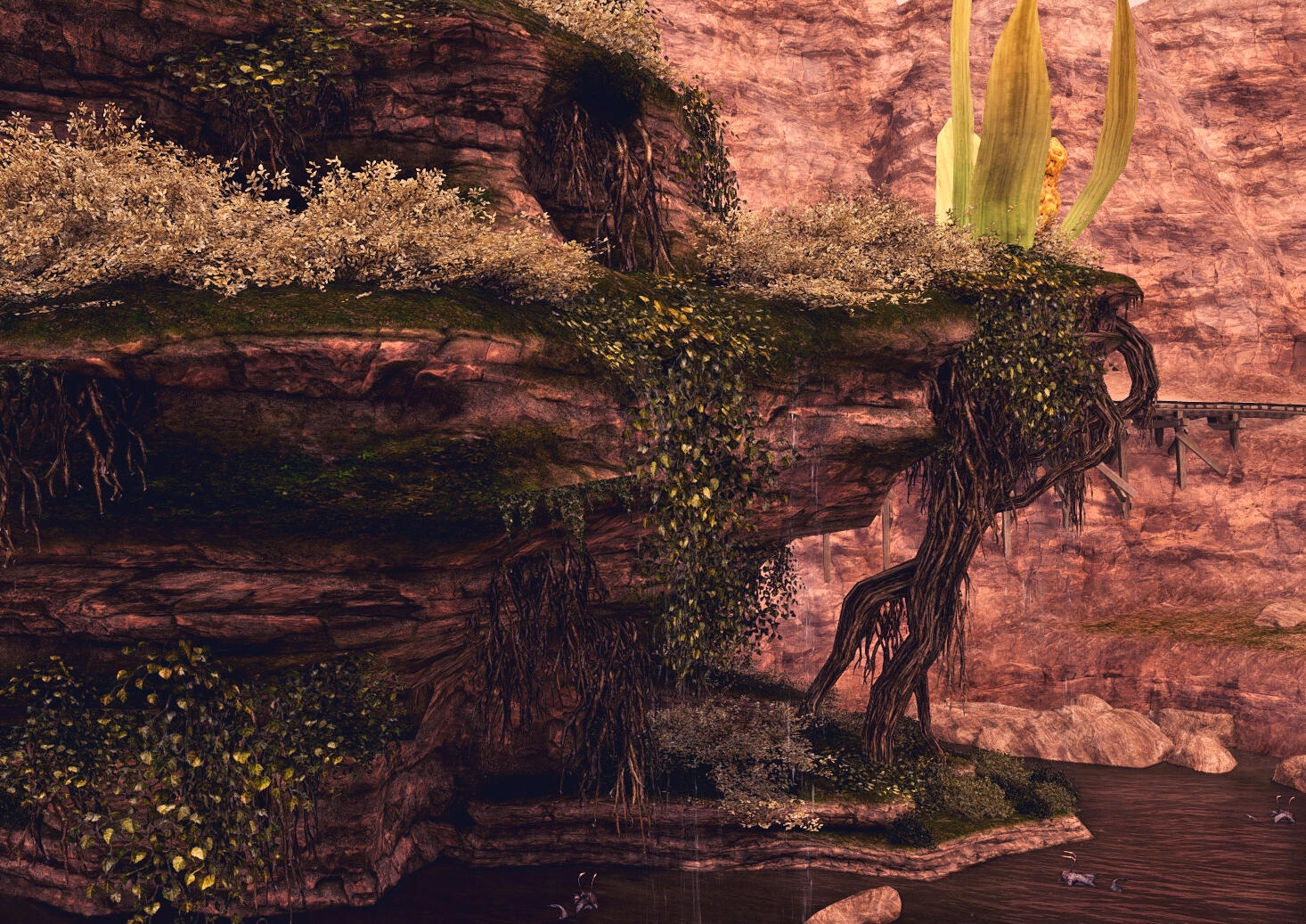V'shar Tia

Overview
Shar is a tribal Tia hailing from the Vah of the Sagolii. With his father recently replaced by a new Nunh, he decided to leave home to travel for a while, and give the new breeding male some room to settle in. Accompanied by his Homa bird, Asim, he has aspirations to see as much of the world as possible before returning home.
AGE: 25
GENDER: Male
HEIGHT: 5'6"
PHYSIQUE: Lean and wiry (Like a wild animal)
ALIGNMENT Lawful good
ORIENTATION: Uncertain
MARITAL STATUS: Single
EXPERTISE: Apprentice Shaman, Archer, 'Falconer'
PERSONALITY: -
Appearance
Shar makes quite a striking sight, dark skin adorned with white war paint, matching with his pale hair and eyes. He looks rather stoic, maybe even a little grumpy, but there is a rather regal air about him. Lean but with a hint of muscle in all the right places, it might be clear that he has not lived the most easy life.Likely considered conventionally attractive, he often wears traditional clothing from his tribe, clothing that tends to show a fair amount of skin. Youthful and strong, he is certainly an embodiment of peak tribal seeker aesthetic.His gaze can be quite piercing, the white coloring a common trait among his tribe, but far more rare outside of it. His ears are slightly longer than usual, adapted to release heat, and his tail is short and fluffy.
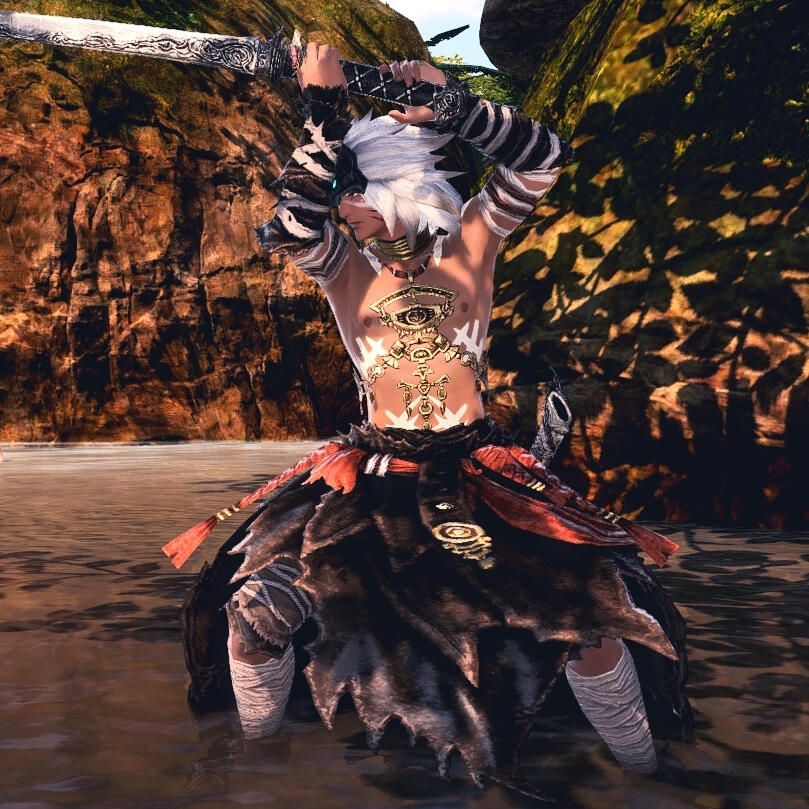
Asim
One of the biggest customs within the Vah is for each member to receive a Homa bird egg (Breaded Vulture) upon coming of age. Expected to hatch and rear their own chicks and create a bond with their animals.Shar's Homa bird is named Asim, and is probably one of the grumpiest creatures out there. No one except Shar is allowed to touch him without risk of being got by that sharp beak. Shar, on the other hand, treats Asim like a precious baby, and often holds and cuddles the big cranky bird.
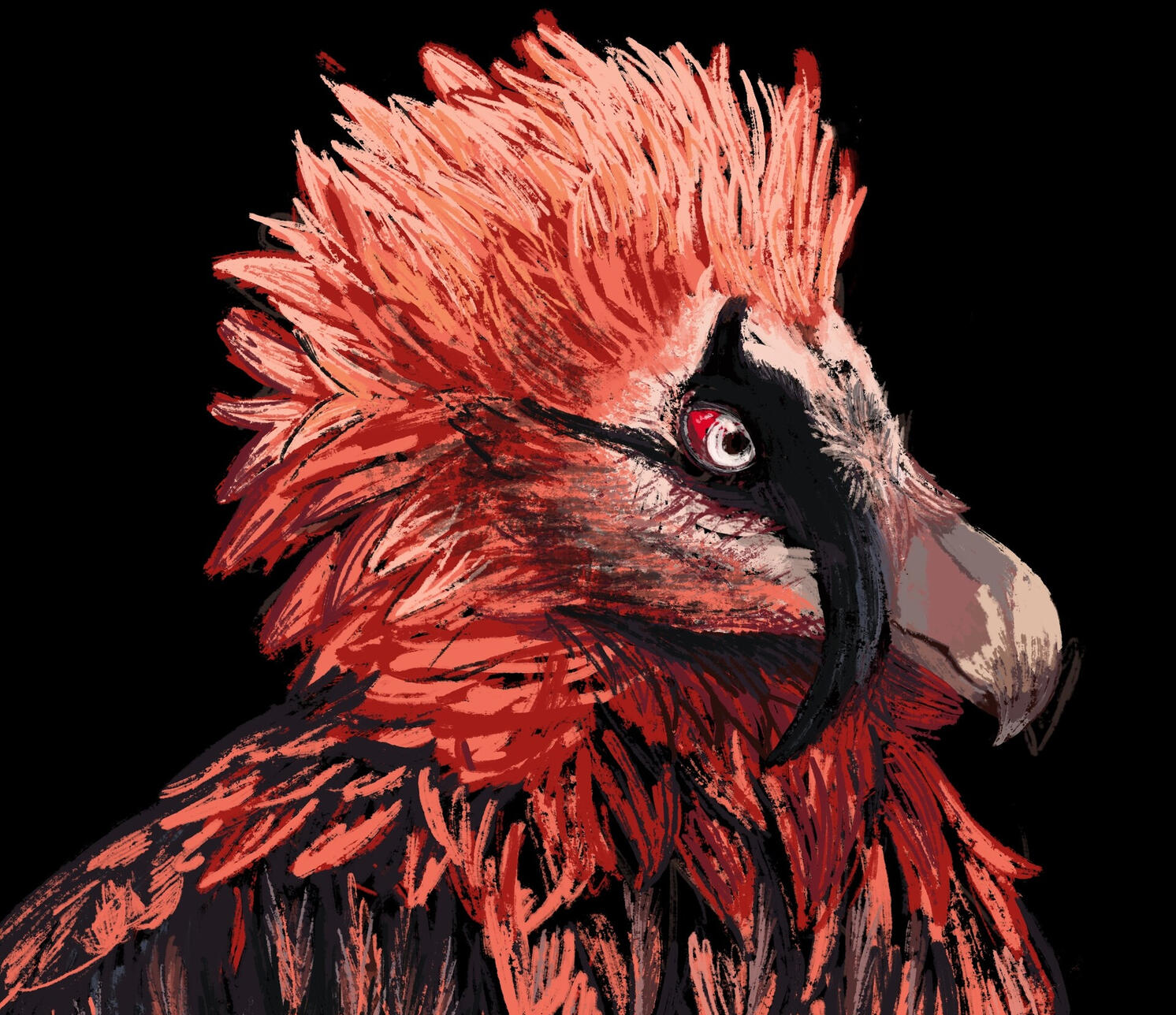
Personality
Thanks to the rather grumpy resting expression, one might see Shar as a little intimidating and cold. However, that really couldn't be farther from the truth. He's actually quite a gentle soul that also possesses a bit of a playful streak. While he has taken on the role of a warrior to help his tribe, he does not particularly relish in violence, at least outside of sparring and play fights.He has the strong urge to protect those weaker than himself and tend to other people's injuries. He doesn't have any particularly righteous ideals, it just seems to be his nature. He's well liked by the children in the tribe, a literal and metaphorical big brother figure for most of them.Because he is fresh out of the desert, there is a lot he doesn't understand about city customs. He may seem a little naive, and has a little bit of trouble remembering that personal space is a thing. Besides these struggles, he takes his duties and obligations very seriously.
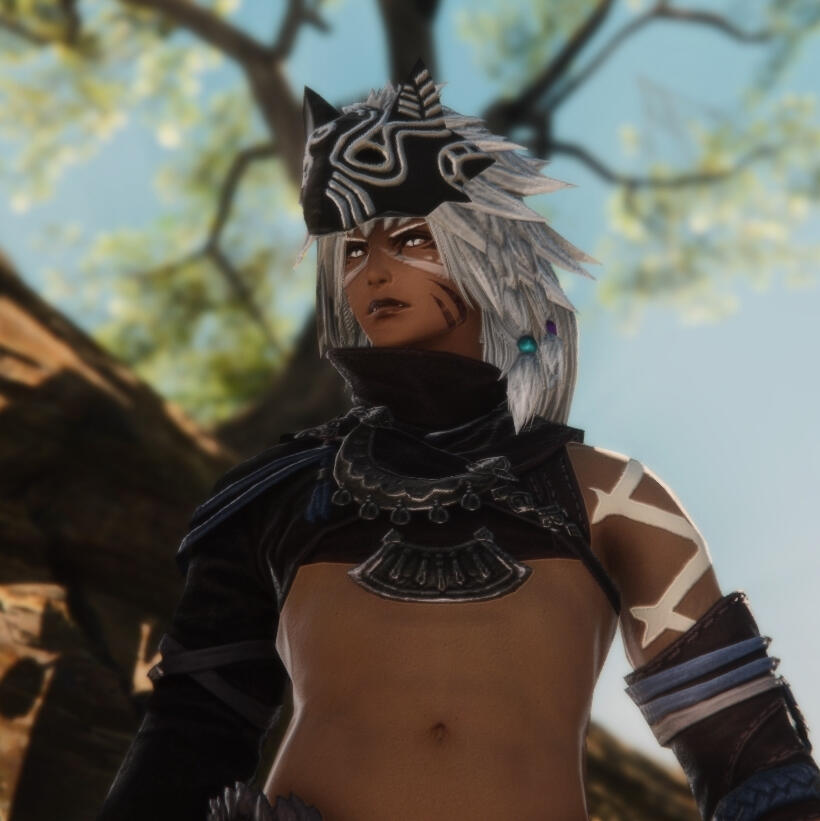
LIKES: Daydreaming, Travelling, Scary stories, Sparring games, Animals, Hot baths, Trying new things, Asim, Naps in the shade, Healing
DISLIKES: Beastmen, Sandstorms, Going hungry, Night guard duty, Being teased
FEARS: Primals, Lalafel, Quicksand, Losing loved ones
QUIRKS: Very protective of his food, but will share with those he likes. (Offering food is considered a significant gesture of kinship.) Has a habit of stashing things. Terrible gil management. Still amazed that snow is a thing that exists.
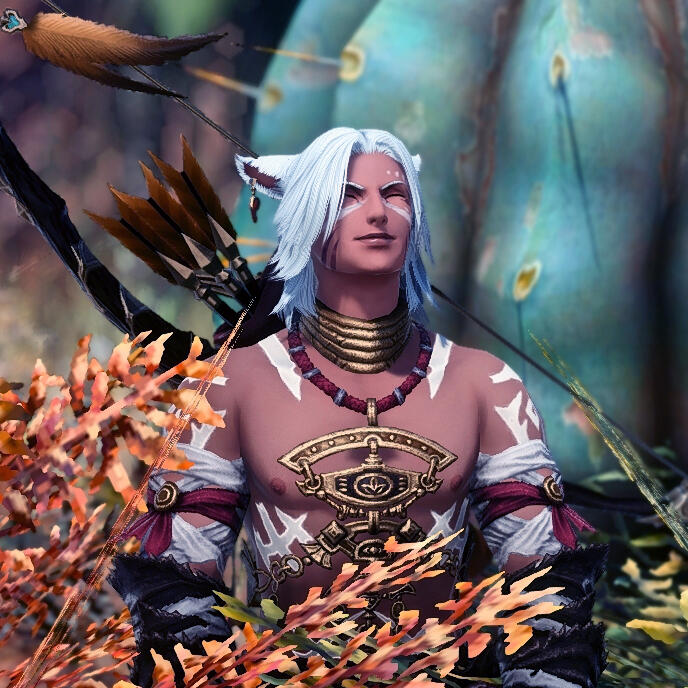
History
Growing up
Shar and his twin were born and raised within the Vah, a traditional tribe living on the eastern outskirts of the Sagolii. The tribe was never terribly big, meaning each member knew one another quite well. A close-knit family unit.However, in spite of this, his brother always seemed like a bit of an outcast. Acting more selfishly and less to the benefit of the group. While Shar would often defend his twin, and try to convince the other to change his ways in private, in the end it didn't really help. His brother left the tribe when they were barely teenagers, and while Shar longed to go with his twin, he ultimately was not ready to leave his family.Losing the presence of someone he considered the other half of himself was quite a blow, but in time Shar was able to recover and move on with his life. He was very close with most of his family, and having them around served as a great comfort.
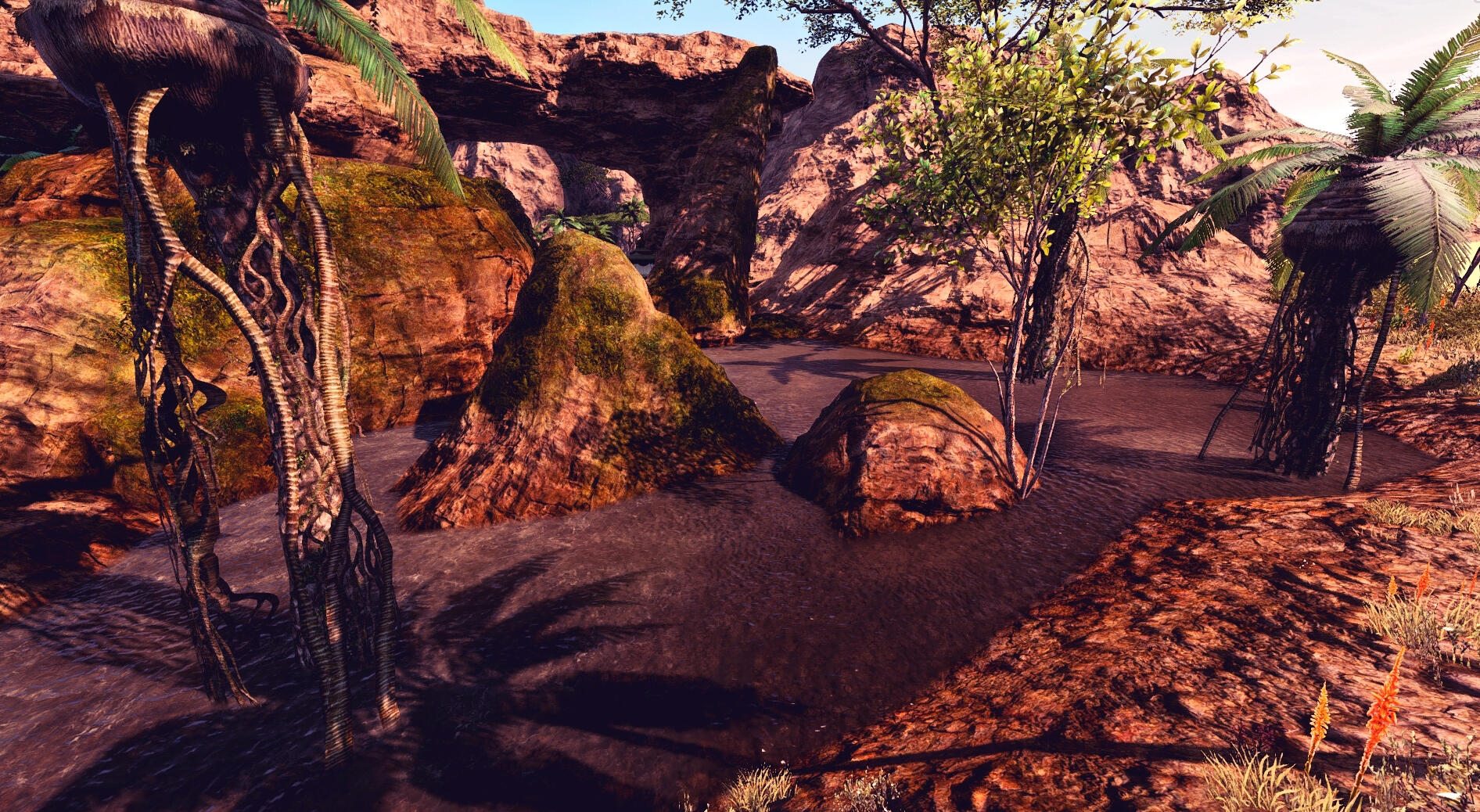
Recent History
After his twin's departure, Shar decided to take on a new role within the tribe. While all able-bodied youths were trained to be warriors and hunters, he also took on an apprenticeship under the tribe's head shaman. He had an interest in healing and medicine, and so trained under the older woman whenever he had no other duties.He grew up to be strong and highly capable in both battle and mending. He never really did truly get over the absence of his brother, however. As if it had left a gap in his soul that just couldn't be filled.
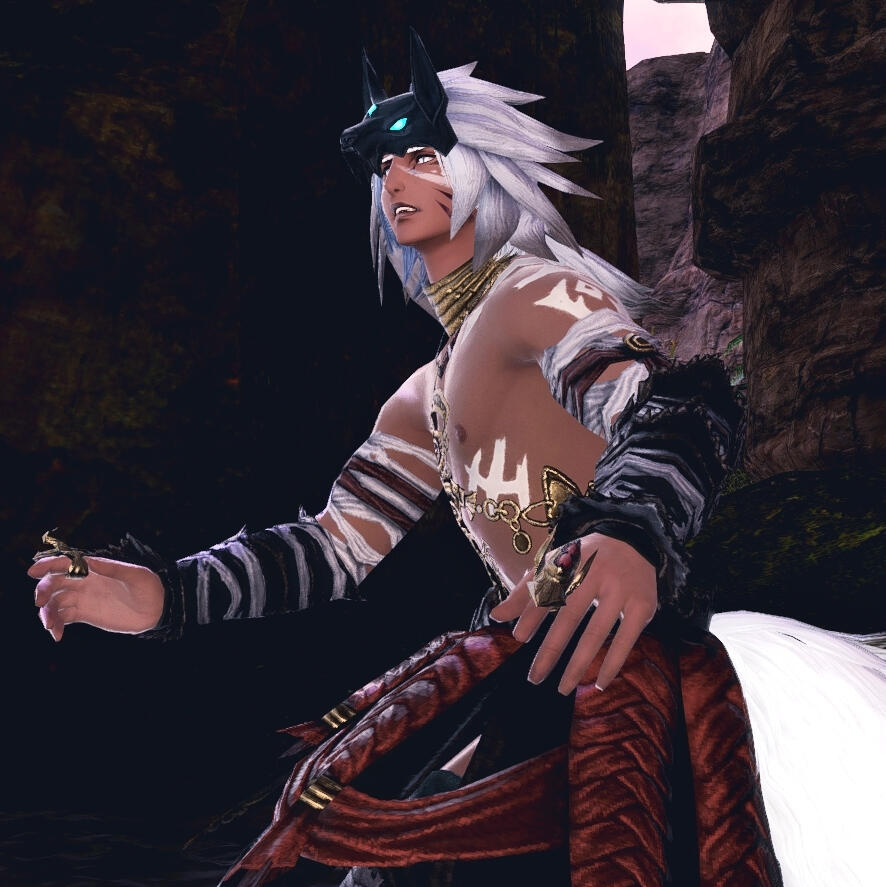
Now in his early 20's, Shar's father was finally defeated, and a new Nunh took over the role. There were no hard feelings, but his father having to leave the tribe was a little upsetting for him, and the catalyst that finally spurred him into making a choice.After discussing it with the head shaman and the other elders, Shar decided that he wanted to travel and see the world for a while. The new Nunh was incredibly wary of him (rightly so), and he thought it might help to give the man some breathing room to get settled.Packing himself with provisions, he made his way across the Sagolii with his bearded vulture, Asim. His first goal would be to track down his estranged brother, and then maybe take the time to see what sights the world has to offer.
Skills
Combat
Shar's combat speciality is most definitely the bow. Charging his shots with different aspects of aether depending on the situation, he is an incredibly good shot.The bow may be his preferred weapon, but he is also fairly skilled in both hand-to-hand as well as heavy melee weapons such as axes and swords. His tribe has their own traditional form of martial arts that all the children are trained in.Although he is well trained for it, and knows it must be done, Shar is not one who is eager to cause bloodshed. Instead he would rather follow the shamanistic path of his people, who specialize in healing and medicines.
| Attribute | Rank |
|---|---|
| Strength | 7/10 |
| Agility | 10/10 |
| Stamina | 8/10 |
| Speed | 10/10 |
| Magic | 7/10 |
| Stealth | 8/10 |
| Attribute | Rank |
|---|---|
| Armor | 4/10 |
| Recovery | 7/10 |
| Improvisation | 6/10 |
| Reliability | 10/10 |
| Teamwork | 8/10 |
| Danger to allies | 1/10 |
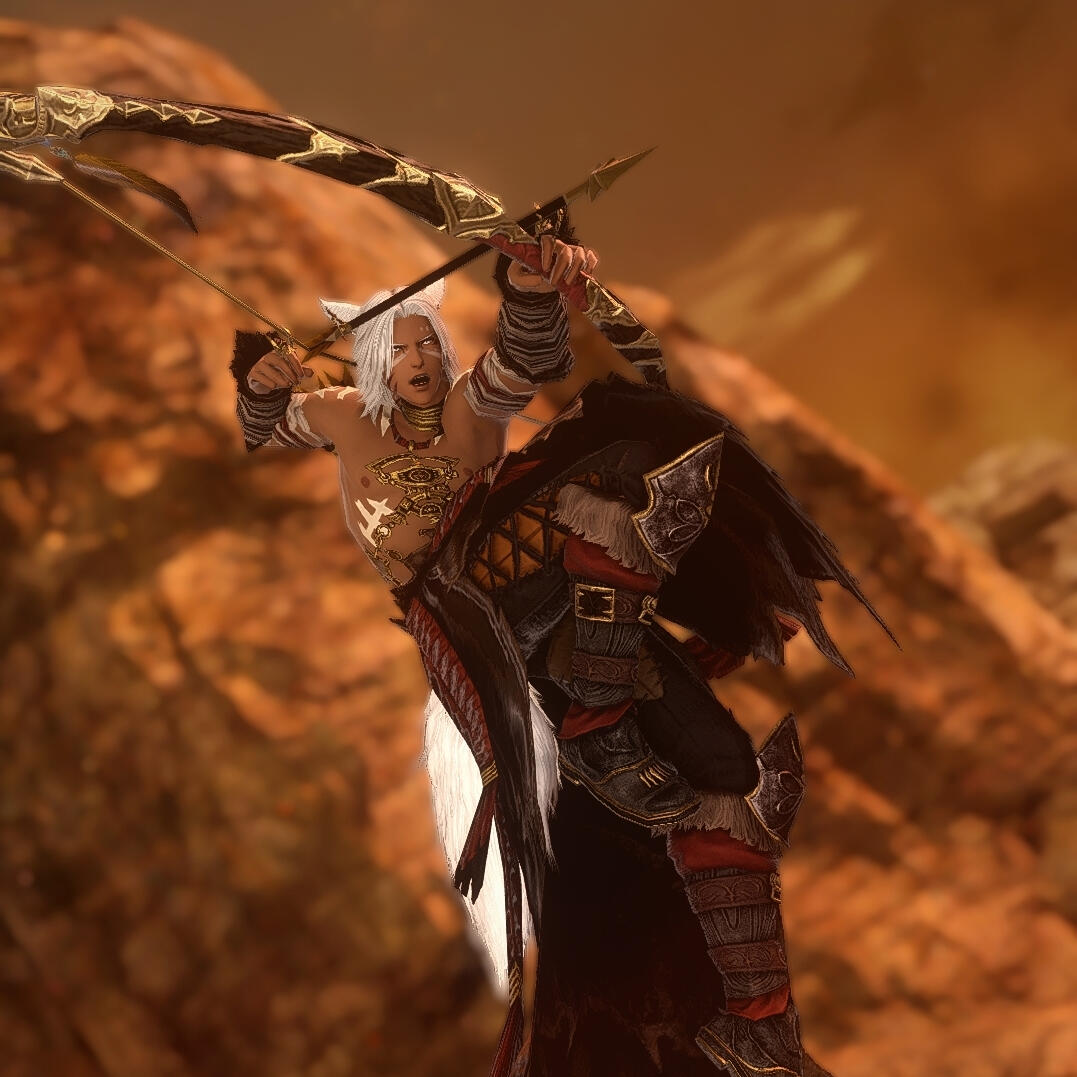
Other skills & traits
| Attribute | Rank |
|---|---|
| Literacy | 1/10 |
| Technology | 1/10 |
| Hand to hand | 8/10 |
| Archery | 10/10 |
| Melee weapons | 7/10 |
| Shamanism | 7/10 |
| Swimming | 4/10 |
| Hunting | 8/10 |
| Animal handling | 9/10 |
| Attribute | Rank |
|---|---|
| Empathy | 7/10 |
| Attention span | 5/10 |
| Social awareness | 5/10 |
| Observant | 7/10 |
| Faith | 9/10 |
| Survivalist | 10/10 |
| Benet (harp) | 8/10 |
| Fire dance | 9/10 |
| Horny | ??/10 |
RP info
You may have seen or heard of V'shar from the following
Vulture Tribe
While the Vah tend to live rather out of the way, they do tend to see a few traveling merchants, as well as offering trades with other tribes who may live nearby. The pale hair and eyes are a common trait in the tribe.Lost in the City
Shar is new to cities, and has little idea of how they function. It wouldn't be uncommon to see him being swindled, or doing strange things like sleeping where he shouldn't or trying to drink from a public fountain.
Sagolii
The Vah tend to travel far through the desert in hunting and scouting parties. Their group would not be an uncommon sight in certain areas, though the land is quite vast. Most of the Sagolii inhabitants are aware of their presence.Identical Twin
Shar's twin left the tribe some time ago, and has been living in Ul'dah. While they dress differently, he could certainly be mistaken for his brother, who is far more well known than he is, thanks to being a priest of Nald'Thal.
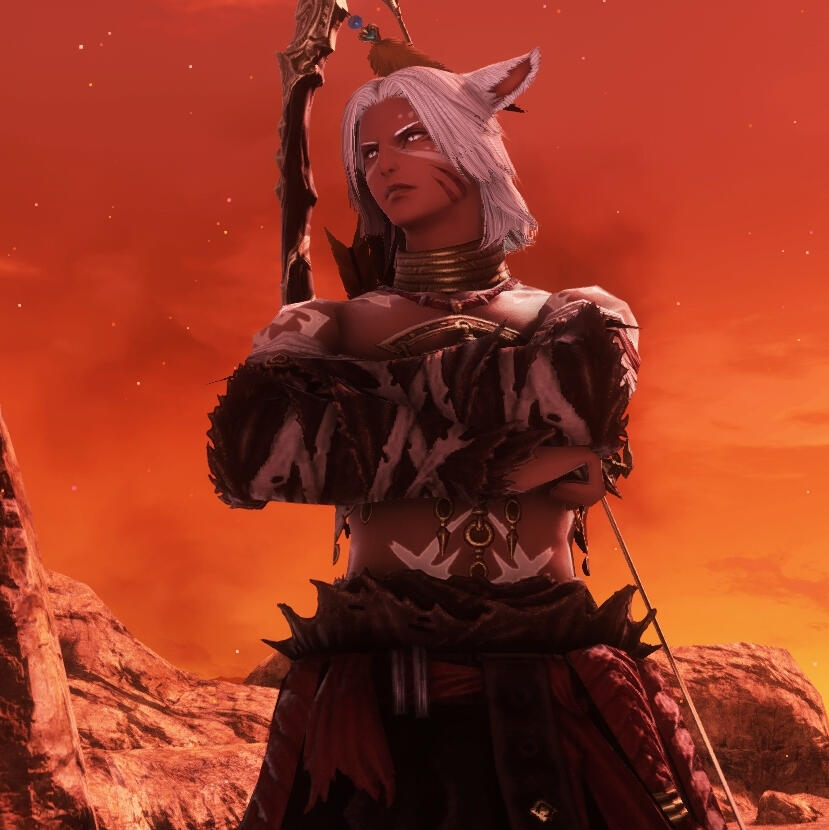
Character inventory
Longbow
Battle axe
Spare pelts for cold nights
Sundried meat
Water skin
Knife
Divination bones
White war paints
Asim, his Homa bird
Rumors
Many think that he's far too soft hearted when it comes to his brother. Defending him blindly and believe he can't see that his twin is pretty awful.
He was commonly teased as a kit for having a crush on the tribe's head warrior. No one knows if it was actually true.
There was a rumor that he once wrestled an escaped Aldgoat into submission with his bare hands. A popular story among the kits of the tribe.
Based on his appearance alone, many presume him to be an uncivilized savage and a possible threat.
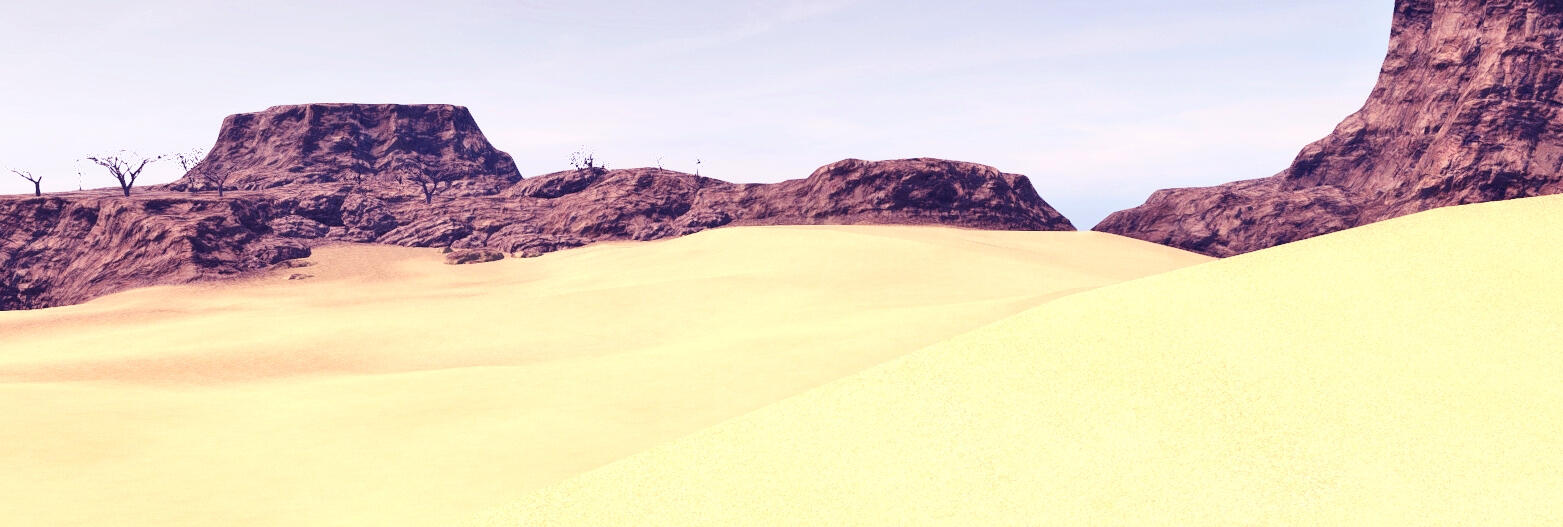
Vulture tribe customs and culture
The Vah are not a particularly large tribe, with most roles only having a few members. (As well as some individuals taking up multiple roles.) The largest group currently are the hunters and warriors, making up most of the tribe's able-bodied members.
Tribe Structure
THE NUNH
A male who has earned the exclusive breeding rites within the tribe. Not a leadership role in itself, but certainly one with some influence. His duties tend more towards caring for the kits and the social balance within the tribe.THE WARRIORS
The strongest and most skilled among the tribe, this group is tasked with keeping the settlement safe, and fending off any beast tribe raiding parties. These individuals often share the roles of hunters and scouts.THE SCOUTS
A role taken on by those warriors with the best stamina. There are slim pickings in the desert, and it’s often required to travel far in search of food and materials. They scout out new territory and map areas of interest. They also keep a close eye on beastmen activity in the area.THE PRIESTS
Those in charge of religious rites, funerals and festivals to honor the gods. Viewed to be more closely connected to the gods and their wishes than normal people. The priests are generally revered, and they ensure that customs are properly upheld.THE ANIMAL KEEPERS
In charge of keeping the vultures, aldgoats and other animal livestock safe. They usually have the last word on what is to be bread, and which animals are ready for slaughter. This lot also tends to care for any cultivated flora within the tribe’s borders. This includes mostly edible desert orientated plants, spices and some medicinal herbs.
THE ELDERS
A ‘council’ of the most experienced members of the tribe, and considered its leaders. May or may not include the breeding Nunh. The head of each group is generally included, and they make big decisions for the greater good of everyone.THE HUNTERS
The main group in charge of hunting meat and skins for the tribe. Many of the hunters are also warriors, but prioritize providing extra food for the tribe in times of peace. In times when fighting is needed, this lot takes up arms and the tribe falls back on its food stores.THE SHAMANS
The main healers and medicine makers within the tribe. They use a specialized form of conjury developed over time within their culture. The shamans are generally considered the wisest among the tribe, and are often consulted on all matters, from the coming weather to the best time to conceive.THE CRAFTERS
Generally for those less combat oriented. This group is in charge of making clothing and tools for the tribe. Outside of standard tools, artistic items are also made. Musical instruments, pottery and rugs are popular. These are also the people who prepare the food. Cooking, drying meats, storing rations and fermenting fruit and milk.THE CHILDREN
Given the chance to try all aspects of tribe life, so that they may later chose which roles they wish to take.
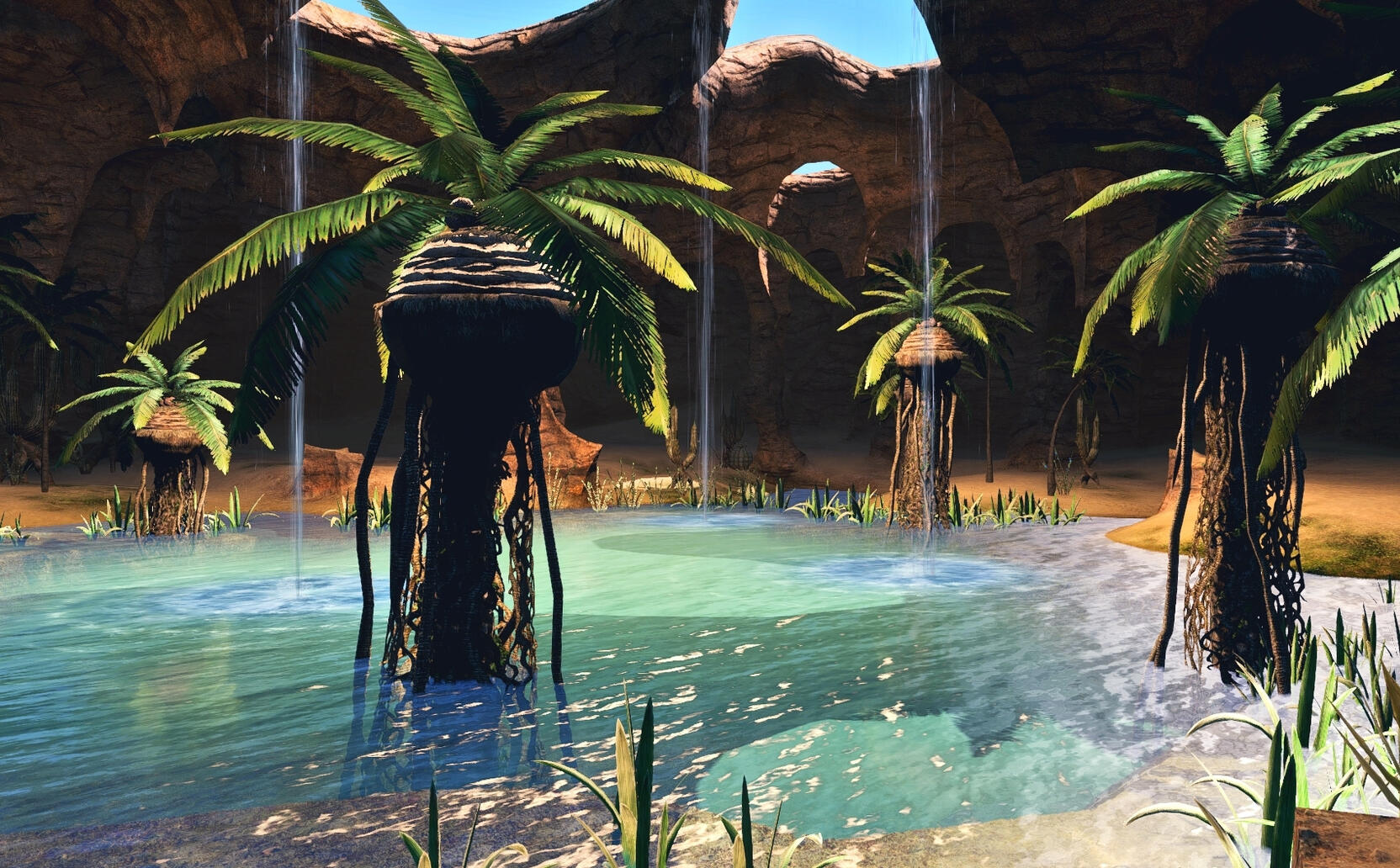
Tribe Law
Laws & Rules
- Do not take the life of other tribe members. Exceptions might be made if they are sick or injured, and request to be let go. Such things are left to the decision of the shamans.
- Do not steal from a tribe member, be it a physical item or glory. Respect what others have earned and is rightfully theirs.
- Any outsiders that wish to join the tribe must first live with them for three moons, before undergoing a rite of acceptance to become part of the family. If they do not seem like a good fit this time, they are made to leave.
- Official hunting parties are not to hunt past the tribe’s territory, unless the need is truly dire.
- Kits that have not yet come of age are not allowed to leave the site of the main settlement unaccompanied. They may travel some way out, but must remain within sight of the sentries.
- (More TBD maybe)Trials
Generally, if a law that has been broken is serious enough, then a trial for those in question may be heard. The elders will hear the story of what happened, and then decide between themselves what to do, if the person is guilty or innocent.Alternatively, trial by combat is also an option, for those who perhaps feel that is the only option. The trial is held in a similar fashion to a Nunh challenge, unarmed. It’s believed that if the person on trial is truly innocent, the gods will grant them a boon to win.Punishments
Punishments for law and rule breaking can range in severity. For the smaller things, a few lashes to the backs of the thighs with a switch, or being tasked with some of the more unpleasant tribe chores will usually do. However, for the more severe cases, exile and execution are both possible outcomes.Adoption of new Members
Outsiders wishing to join the tribe must first live with them for a three month period. After the time has passed, the elders will discuss if said person is a good fit, and a boon to the tribe rather than a detriment. If they are not accepted, the new person will be cast out. If they are accepted, the new person will have to undergo a small trial to prove they are serious. The trial in question is a test of willpower, to stand under one of the cold waterfalls inside the caves from dawn until dusk. If they pass, they are officially part of the tribe, and are presented with their own Homa bird egg to raise.
Tribe Festivals
Fire Festival
Held during the solstice, on the longest sun of the year. A celebration to honor Azeyma. Traditionally, resources are saved beforehand so that a feast of meats, curries and fresh fruits might be had.
Fire dancing, music and alcohol made from fermented goat milk are a few of the traditions often seen on this holiday. Instruments used generally include the Darbouka, Benet, Sheneb, Lute and the Lyre. This celebration lasts from sunrise until midnight.Souls Night
Held during the shortest sun of the year. A tradition to honor the ancestors, and all those who have previously passed the judgment of Nald’Thal.
It’s traditional to fast on this day, and a ceremony is held by the priests after sunset. (specifics TBD)First Rains
A celebration held on the first rains of the year, whenever that may happen to be. Rain is incredibly rare and valuable, so a party is held to thank the gods for their gift.
Typically an aldgoat will be ritualistically slaughtered and then eaten by the tribe members, as well as another excuse to break out the alcoholic milk.
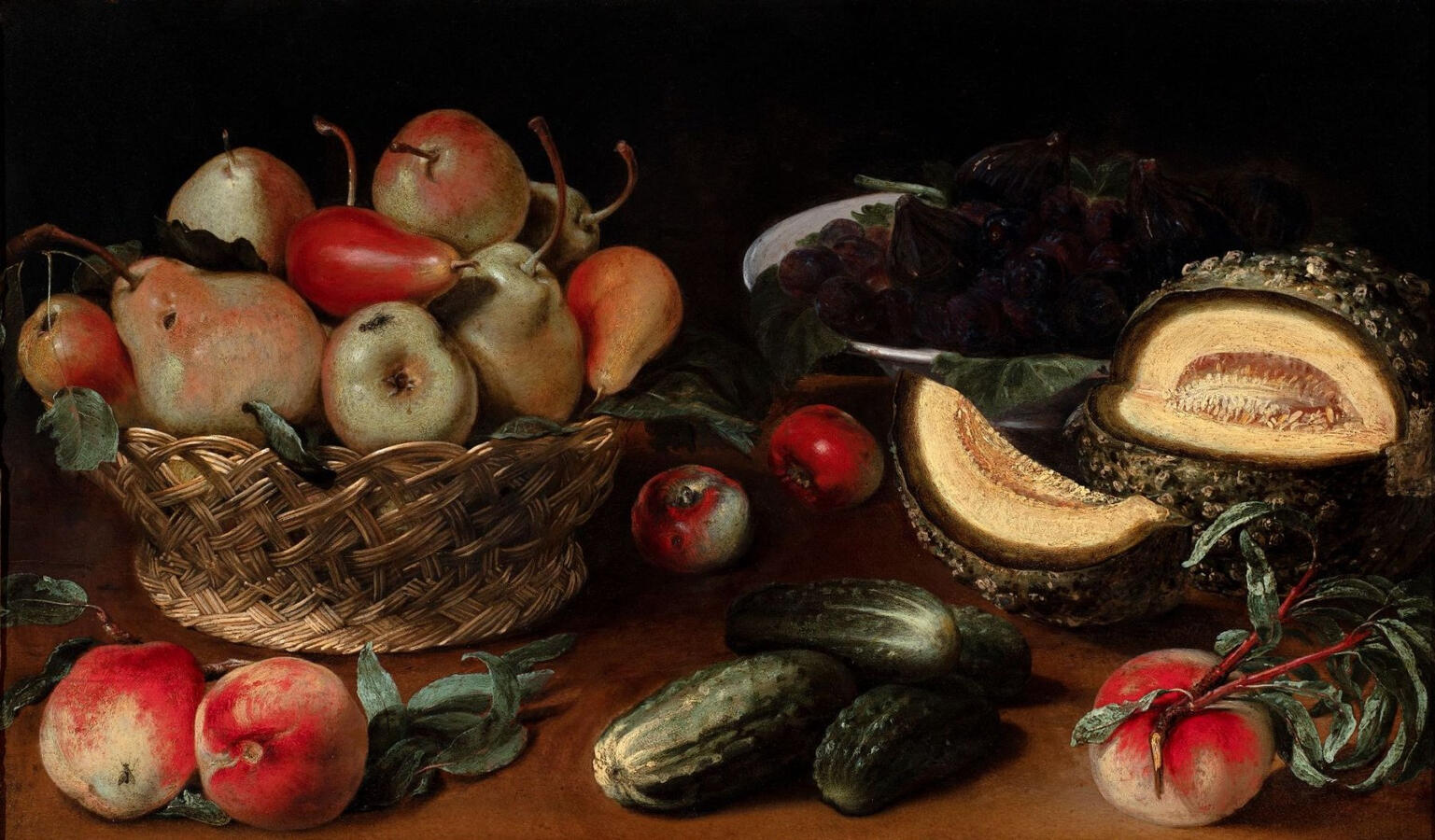
Tribe Rituals
Coming of Age
Upon hitting puberty, each kit is then to undergo their special coming of age rites. These rites differ between males and females, as well as a couple of offshoot additions for those unable to participate in the standard ceremony. While they may seem a little like a daunting trial to the children, there is no way to truly fail. If somehow something goes wrong, they simply try again.For the girls, they are taken on their first official hunt out into the sands. Usually accompanied by a more experienced huntress or two. She will traditionally be the one to make the killing blow to whatever quarry the group has taken down. After taking this life, she will be considered an adult and a full fledged hunter.For the boys, they hold a mock Nunh challenge ceremony. Young Tias learning about what their end goals ought to be, are given the chance to challenge their father, or other children of similar ages. Winning or losing doesn't matter in these challenge games, but it is meant to give the boys some experience and an idea of what to expect in the future.The third kind is a mix of things, geared towards those less physically able, or holding a strong interest already in a specific part of tribe life. The shamans, priests, crafters and animal keepers all have their own specific coming of age rights, should the kit wish to specifically request one of those. Such ceremonies often include such things as making medicine, reciting religious ideals, crafting a specific item or demonstrating one’s practicality with the Tribe’s animals.Homa Bird Egg
After completion of the coming of age ceremony (Or induction ceremony, for new adults who have joined the tribe), each person is presented with their own Homa bird egg. They are expected to incubate this egg themselves, and raise the chick as they see fit. Each member has their own bird, though any broken eggs or dead chicks are seen as an incredibly bad omen for the tribe as a whole. (If such a thing occurs, the member in question is allowed to try again the following year. However, two failed hatchings will result in that member being deemed unworthy, and cast out from the tribe.)Funeral Pyre Rites
In the Vah tribe, bodies are cremated. Not only is it a terrible idea to bury corpses in the desert sands, but since both Azeyma and Nald’thal command the element of fire, burning the body of a loved one is believed to honor those gods and give the departed soul the best possible chance in the afterlife. Generally a pyre is built, and the ritual overseen by the priests while the entire tribe attends. In the event that a death occurs with no body able to be recovered, a straw man alongside a personal belonging is burned in place of the dead.Nunh Challenge
Any Tia from inside or outside the tribe is allowed to challenge the standing Nunh, but the Vah have rules that must be followed. The whole tribe (Minus any scouts that are away and so on) must attend the fight, and the fight is strictly hand-to-hand only.
Generally both participants are painted by the huntresses in the traditional white war paints, and they have a specially designated spot where these fights happen. Quite a lot of preparation goes in beforehand, so a challenge is not to be issued lightly.The fight lasts until one of them gives up, and in the event that the current Nunh is beaten, the new Tia will take over. If the standing Nunh loses, they are no longer welcome to stay within the tribe, as it would be seen as an insult to the victor, and a point of contention.Earning Tattoos
Tattoos are awarded to those who have earned them, either through achievements in battle, or even more mundane things such as producing an especially bountiful harvest. Each mark permanently etched into one’s skin has its own meaning, and those who have earned such wear their marks proudly.Nameday Customs
The nameday customs are fairly simple for the Vah. Giving gifts is not really a tradition for them, but rather that the person in question gets an extra share of the food and they might pass around some of the wine or milk. A small celebration might be had, with some of the members bringing out their instruments for the evening.Spirit water & Sagolii sage
Spirit water is a concoction made by the shamans, containing various herbs and other ingredients. It’s basically a hallucinogenic, and used in ritual when one wishes to commune with the gods, or be granted a vision of the future. Spirit water is provided on request, but will only ever be drunk under the supervision of a priest.Sagolii sage is one of the ingredients used in their commonly smoked herb mixture. (The mixture itself has a similar effect to cannabis) But the sage gives it a pleasant smell when burned. Typically, this is smoked with a carved pipe, and is a very commonly consumed by the tribe members.
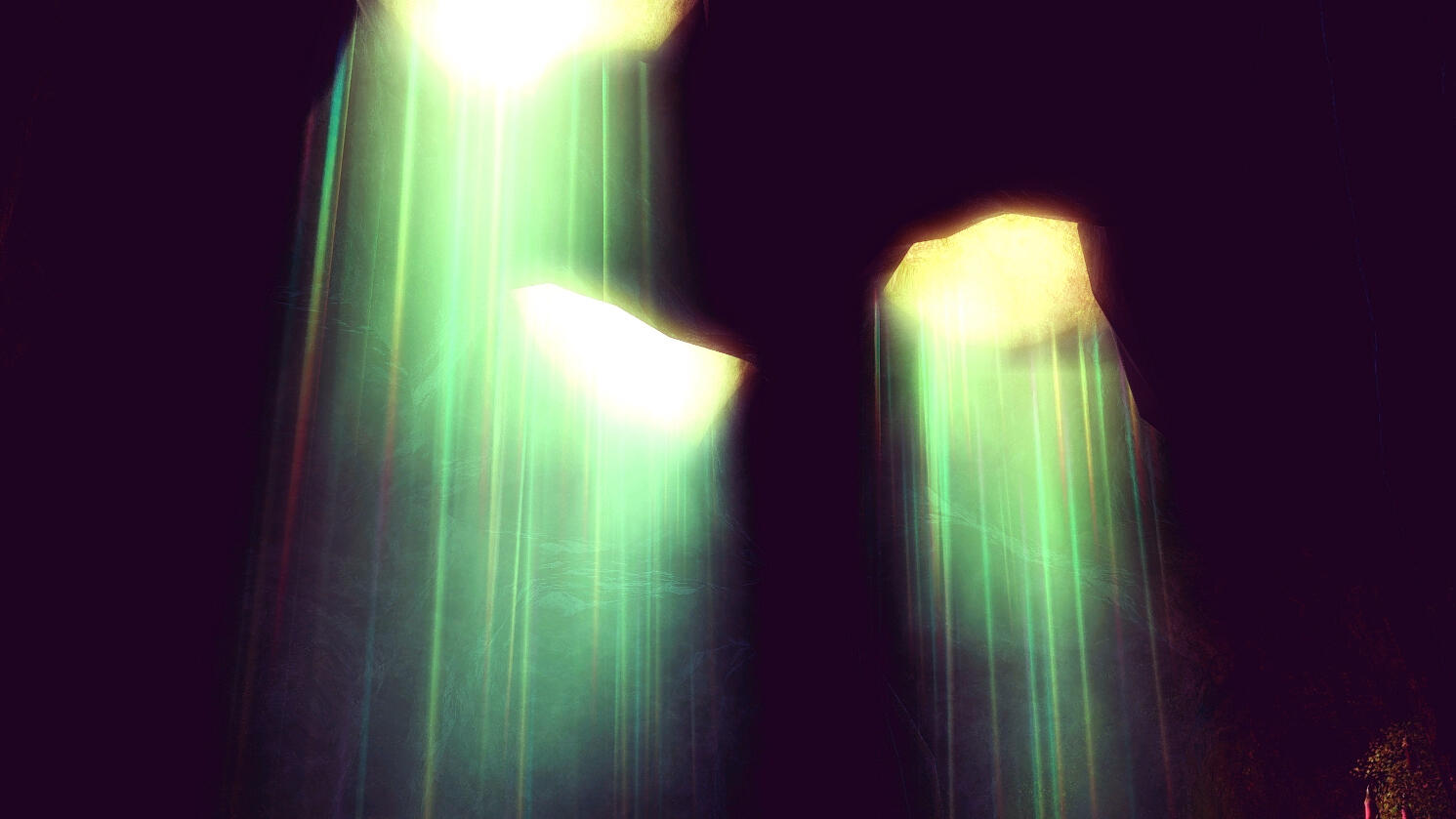
Languages
Sagoliian Dialect
The primary language used by the tribe, and those who abide in the sagolii desert. It contains quite a lot of hissing and is similar sounding to real world Arabic.Common Eorzean
Learned by most of the tribe as their second language. This is to prevent barriers when trading with passing merchants and other non-Sagolii natives, as well as for those who may choose to leave the tribe.Miqo'te Huntspeak
Mostly used by the hunters and warriors within the group. This also includes some sign language and mimicked animal calls. Simple and short communication designed to not alert potential prey.
Religion
Exaltation of Azeyma
The number one most important god to the seekers of the Vah tribe. The sun is the basis upon which all life sprung forth, and her gift is an exalted one. However, while the sun giveth life, it may also take it away. The scorched sands of the Sagolii are proof enough of such things, and that all must be held within balance. Many pray ro Azeyna for all kinds of reasons, not just for the elements she is most typically associated with.Nald'thal
The secondary god of the Vah tribe, likely thanks to past influences from Ul’dah. The tribe has always had strong beliefs and practices centered around the afterlife, and the value of trading. The twin gods came to be a firm part of their culture, taking a back seat in importance only to Azeyma.The other Gods
While the rest of the twelve are generally acknowledged, their importance is something that is decided by each individual. While crafters and builders may feel more connected to Byregot, or those in charge of growing the crops may pray to Nophica, there is no set standard for the tribe as a whole outside of Azeyma and Nald’thal.Afterlife
Due to the fact that the tribe is secluded, and there is no formal education system to speak of, the tribe came to develop their own beliefs in terms of the afterlife. They believe that each soul is a reincarnation, reborn again from body to body as long as their soul is found worthy. (Be it man or animal, everyone has past lives, and the priests tend to have the most insight on what they were.If one were to die, and Nald’thal were to deem their soul unworthy, they would be sent to hell for a time. Varying levels of hell, depending how corrupt the soul was. After some tempering in one of the seven hells, the souls are given another chance to be reborn once again. The threat of going to hell if one doesn’t act properly is a threat the priests like to remind the tribe of fairly often.Superstitions
Two bad eggs within the same season: Considered an ill omen and hints that the tribe may have a bad year.
Two failed egg hatchings: If a person fails their Homa ritual twice, it's taken as a sign that person is unworthy, and they are cast out.
Eclipse: Feared as a warning from Azeyma, that she is angry with her people. They tend to stay hidden inside when one of these happens.
Red flowers & Gems: It's believed that leaving dried red flowers near the place that you sleep will ward off evil and misfortune.
It's also believed that wearing gemstones will grant good fortune.
Ashkin curse: It's not uncommon to encounter stray undead through the Sagolii. The tribe believes that they are people whose souls have been torn from their bodies, likely due to committing crimes against the gods.
Sneezing: Some believe that sneezing is a sign of some evil force trying to draw your soul from your body. Generally a hand sign is made after to ward off the spirit and keep the soul secure. Multiple sneezes are a cause for concern.
Voidsent: Viewed as devils from the underworld. Inherently evil and generally avoided at all costs.
Territory
Main Settlement
A large caved area within the borders of the Sagolii. Sandstorms have long since worn away the softer parts of the rocks, leaving behind a naturally formed cave system. The inside remains cool even on the hottest of days, and the area has its own natural spring. Thanks to the spring, the tribe was able to settle there, a little oasis amidst the searing heat. The spot is suitable for growing plants, and the caves make for a good defendable position against beastmen raiding parties.Outposts and Sentry towers
Built in areas that tend to have a water source or natural shade. These posts are used mostly as resting areas for scouts, and sometimes have rations stored away in hidden areas. They are not particularly elaborate structures, but they serve their purpose well enough. There are several slightly closer to the main settlement, where patrols can keep an eye out for any incoming attacks.Terrirory range
From the eastern outskirts of the Sagolii desert, and into parts of the endless plains. The Vah have a rather large area of territory that they will hunt in, much like that of a lion pride. Since the area is quite large, the borders are not enforced, but generally any Beastmen found within the area are killed on sight.
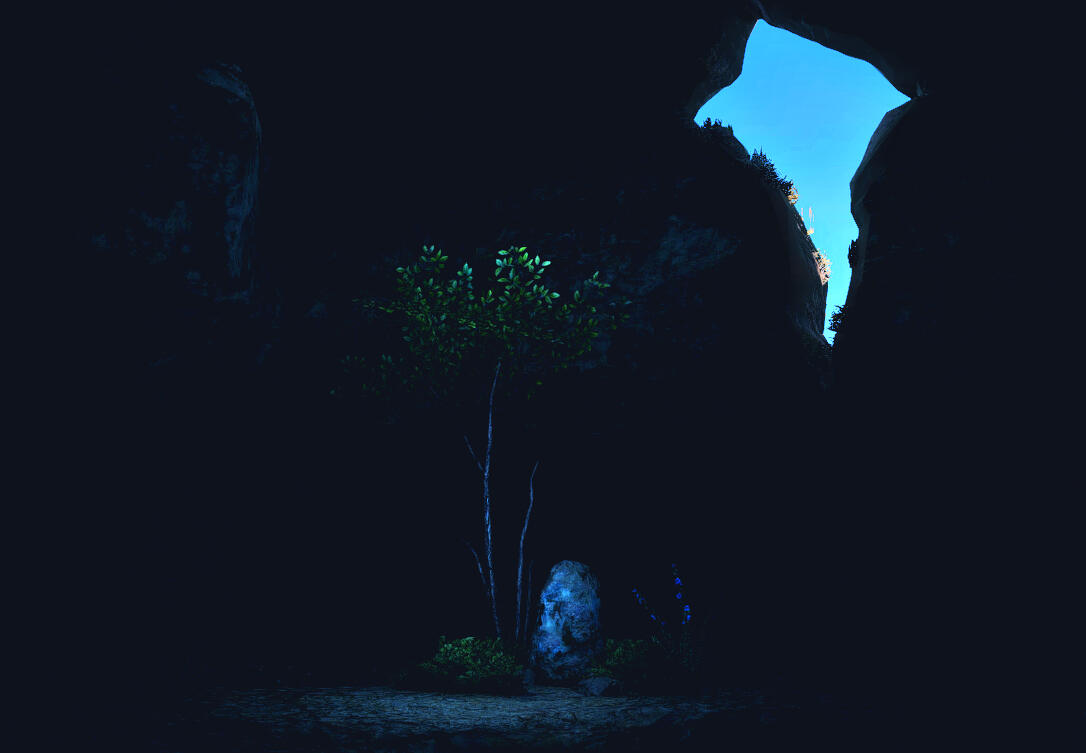
Livestock, farming & crafting
Animals kept
The bearded Vulture hatchery and an Aldgoat herd are the two main animals under the tribe’s care. Due to the tribe’s proximity to the endless plains, there are plenty of areas for the goats to graze, though a watchful eye is always kept. Some keep Cobras, scorpions and spiders in order to harvest the venom for medicine and other uses.Flora grown and gathered
Pomegranates, chili peppers, lentils, chickpeas, garlic, barley, popotos, rice, onions, figs and dates are grown around the oasis of their home. As well as some spices, such as cumin, coriander, tumeric and pepper.
Commonly gathered edible plants from the desert and endless plains include jojoba nuts, saguaro, agave, gourds, papyrus stalks, leeks and radishes.Popular crafts
While the most practical items crafted tend to be weapons and tools for hunting or farming, there are many more items that the tribe members enjoy making. Clothing, blankets, baskets, clay pottery, musical instruments and other such things. Precious metals and stones are often made into jewelry or clothing accessories.
The plush rugs made from Aldgoat wool are probably the most popular, as they are comfortable and warm to sleep on. The tribe has even been known to trade these for other resources with traveling merchants.Traditional foods
Spicy goat curries, rice, flatbreads, goat butter and cheese, eggs cooked in various ways, roasted sandfish, falafels, goat shawarma, sandworm and drake meat seasoned with spices, cooked invertebrates such as scorpions and sand crabs.
The tribe's diet mostly consists of a mix between their own resources and things gathered or hunted from their territory. Sometimes they might get lucky and come across honey bee nests or fresh wild fruits. Most living animals are considered fair game to be eaten.Traditional drinks
Heket, a beer made from water, fermented barley and sweet fruit juices. Kumis, an alcohol made by fermenting unpasteurized aldgoat milk. Shedeh, a wine made from fermented figs and pomegranates. Fruit juices and cactus water is also commonly consumed.
Because such things are popular among the tribe, much effort goes into the making of these traditional alcoholic beverages. Generally they are stored in the coolest areas at the back of the caves.
